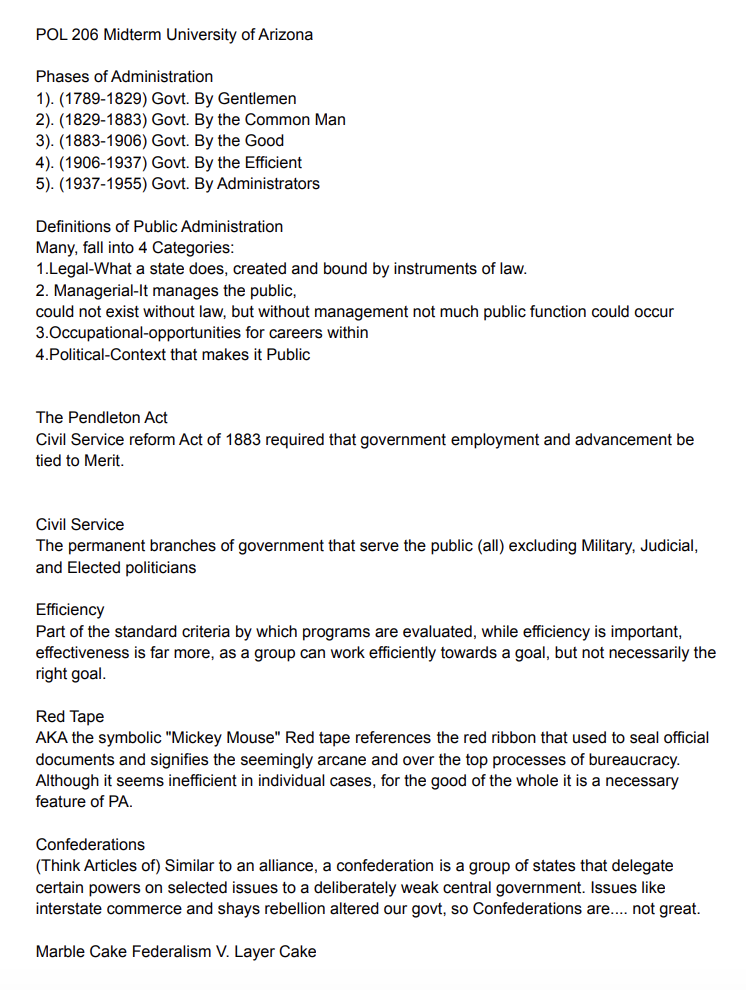POL 206 Political Science Exam Notes – University of Arizona (Grade A)
Summary:
The content discusses various aspects of Public Administration and Government, including historical phases of administration, definitions of public administration, the Pendleton Act, civil service, efficiency, red tape, confederations, federalism phases, mandates, executive power views, street-level bureaucrats, Miles’ Law, new feudalism, executive branch machinery, Dillon’s Rule vs. Home Rule, goals of public administration, and the roles of different branches of government.
The text covers the development, implementation, and study of government policy, highlighting public administration’s political, legal, managerial, and occupational dimensions. It delves into the concepts of direct and indirect government services, the significance of regulation and the pros and cons of a two-party system. The text also outlines elements of the Constitution, such as the preamble, the Bill of Rights, and the roles of the legislative, executive, and judicial branches of government.
Excerpt:
POL 206 Political Science Exam Notes
Phases of Administration
1). (1789-1829) Govt. By Gentlemen
2). (1829-1883) Govt. By the Common Man
3). (1883-1906) Govt. By the Good
4). (1906-1937) Govt. By the Efficient
5). (1937-1955) Govt. By Administrators
Definitions of Public Administration
Many fall into 4 Categories:
1. Legal-What a state does, created and bound by instruments of law.
2. Managerial-It manages the public and could not exist without law, but without management, not much public function could occur
3. Occupational opportunities for careers within
4. Political-Context that makes it Public
The Pendleton Act
Civil Service Reform Act of 1883 required that government employment and advancement be tied to Merit.
Civil Service
The permanent branches of government that serve the public (all), excluding Military, Judicial, and Elected politicians.
Efficiency
Part of the standard criteria by which programs are evaluated, while efficiency is important, effectiveness is far more, as a group can work efficiently towards a goal, but not necessarily the right goal.
Red Tape
AKA the symbolic “Mickey Mouse” Red tape references the red ribbon that used to seal official documents and signifies the seemingly arcane and over the top processes of bureaucracy. Although it seems inefficient in individual cases, for the good of the whole it is a necessary feature of PA.


Reviews